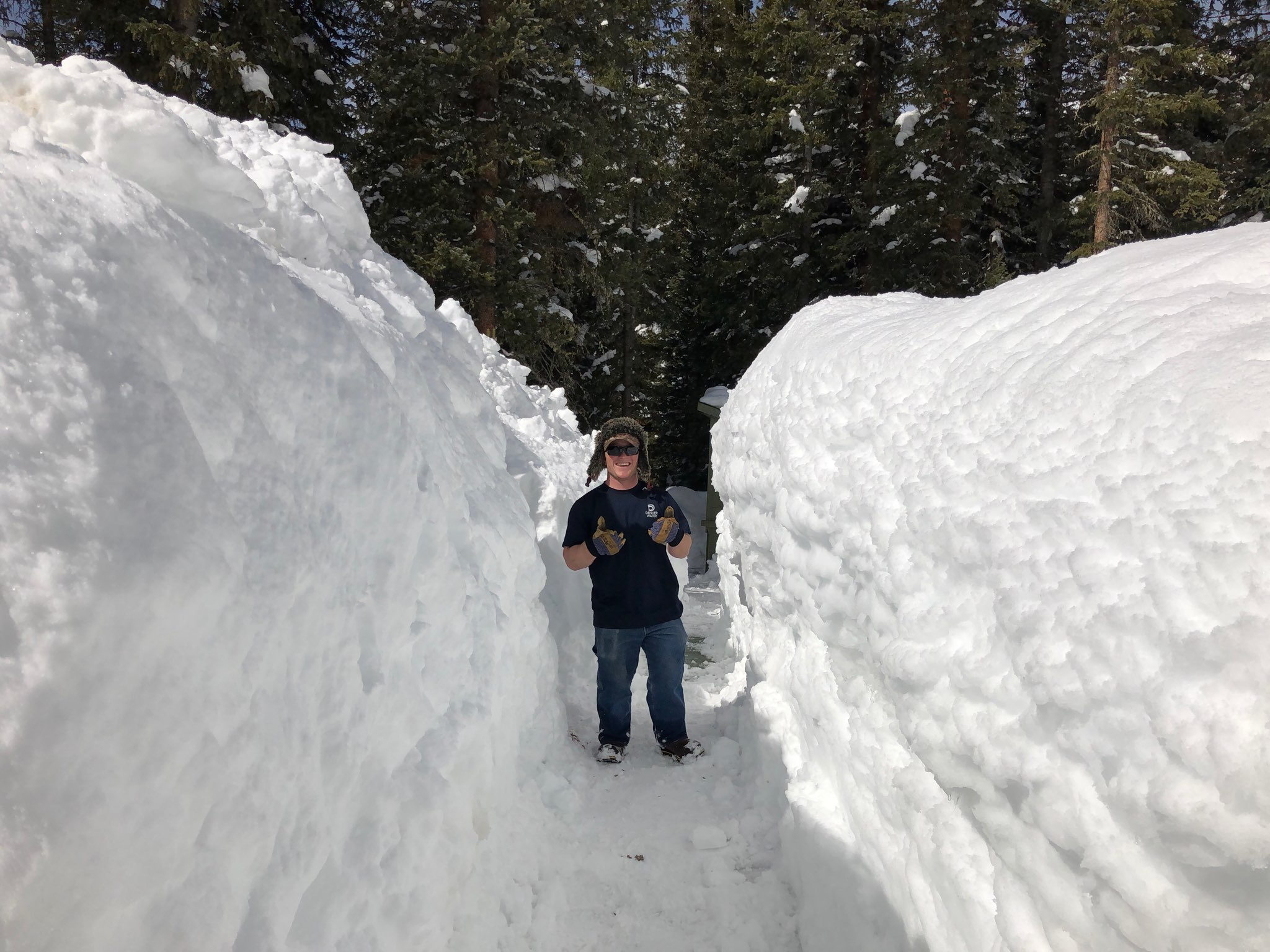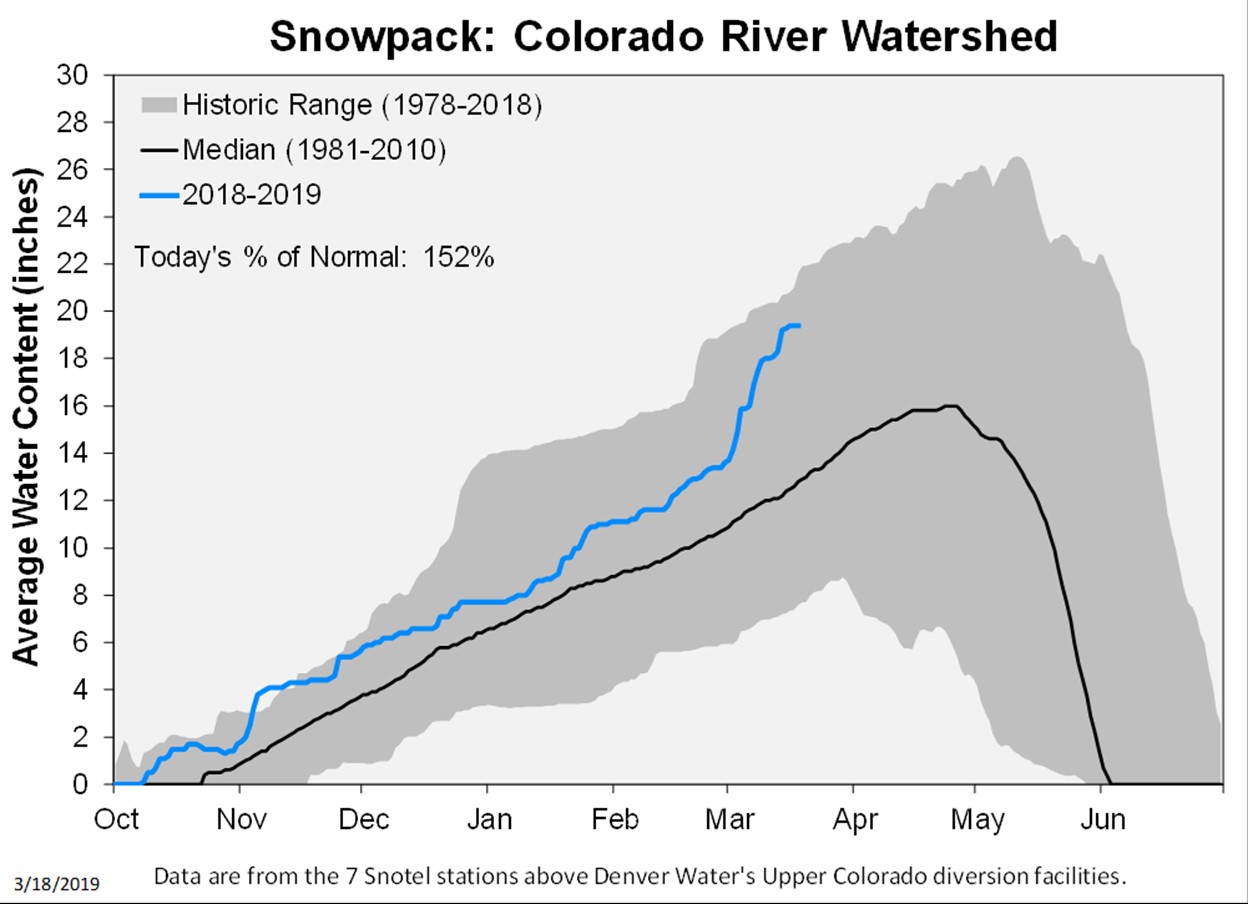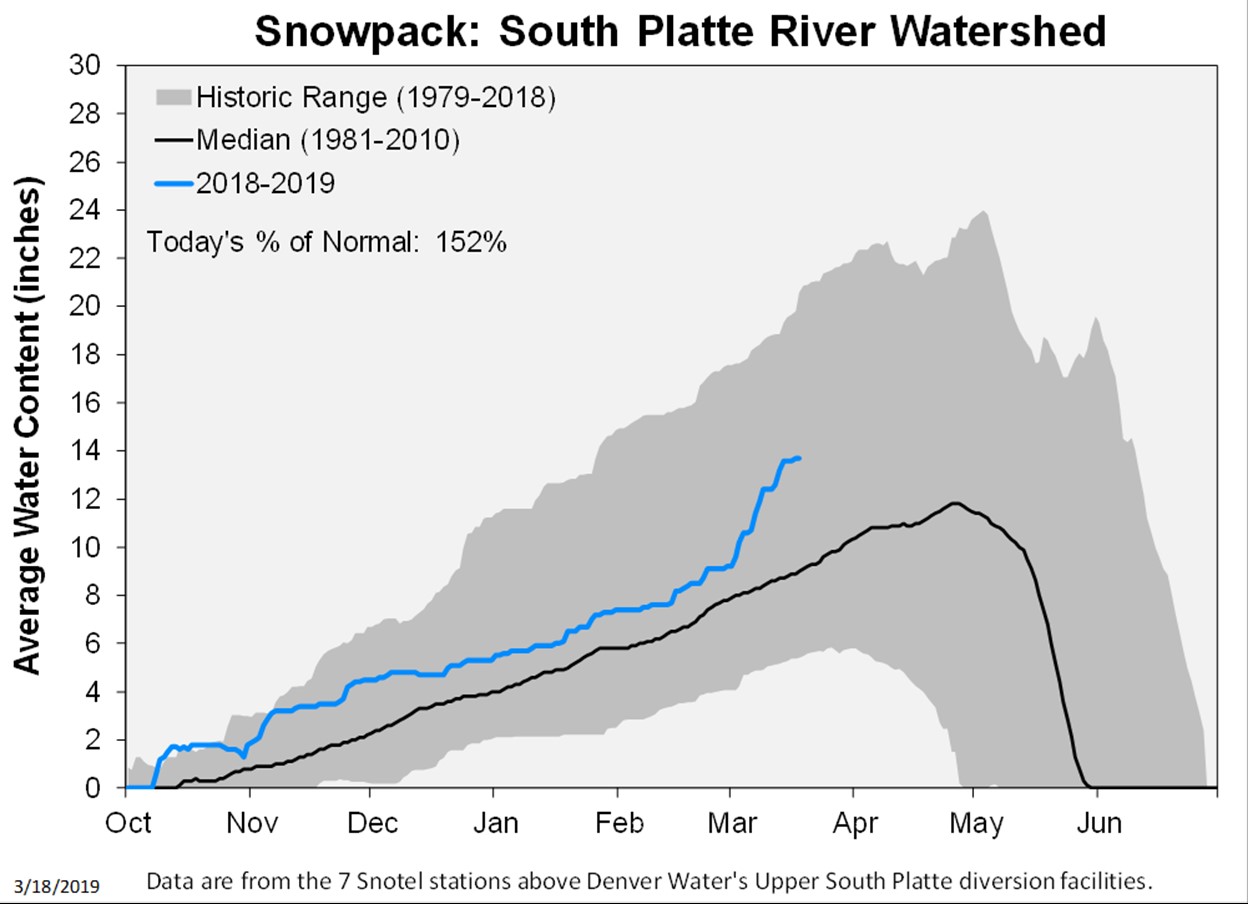
The ‘bomb cyclone’ brings positive outlook
The “bomb cyclone” came and conquered. Towns stood still, cars were left stranded, and trees collapsed as rain turned into snow and high-speed winds howled throughout the day.
But the storm did bring good news for water supply.
As of March 18, the snowpack in both of Denver Water’s collection systems, within the Colorado River and the South Platte River watersheds, had surpassed 150 percent of normal.
So, what does this mean for summer water supply?
“We definitely got another boost in snowpack from the bomb cyclone,” said Cindy Brady, senior water resources engineer for Denver Water. “But we do still have a few more weeks of season to go.”
During this time of year, when the high country typically picks up a half inch of precipitation every week, one dry stretch can have a big impact on snowpack levels.
Many people are now wondering what this means for flooding risk.
“Flooding is always a risk in high snowpack years,” said Nathan Elder, Denver Water’s manager of water supply.
“We don’t know what future weather will bring or how quickly or slowly the snowpack will melt. This year, lower than normal reservoirs and low soil moisture going into runoff help reduce flooding risk. Additionally, to date we have not seen significant dust on snow events that can increase the rate of snowpack melting,” Elder said.
Denver Water works throughout the year to maintain its infrastructure and has Emergency Action Plans in place for all of our reservoirs in the event of high water.
Also, several factors can eat away at a healthy winter snowpack, reducing the amount of water that ultimately ends up in streams and reservoirs, including:
- Winds can pick up the snow and move it around.
- Water is always moving into the air, or evaporating. How much snow disappears to evaporation increases when temperatures rise.
- Mother Nature gets first dibs on the water in the snow, with the soil soaking up moisture like a sponge. Only when the soil is saturated does the remaining water run into streams and reservoirs.
While summer water supply is looking great, it’s important to remember that half of Denver’s water supply comes from the Colorado River, which has been plagued with long-term drought.
Read “Confronting Colorado River challenges” to learn more about what Denver Water is doing to address these shortages.



